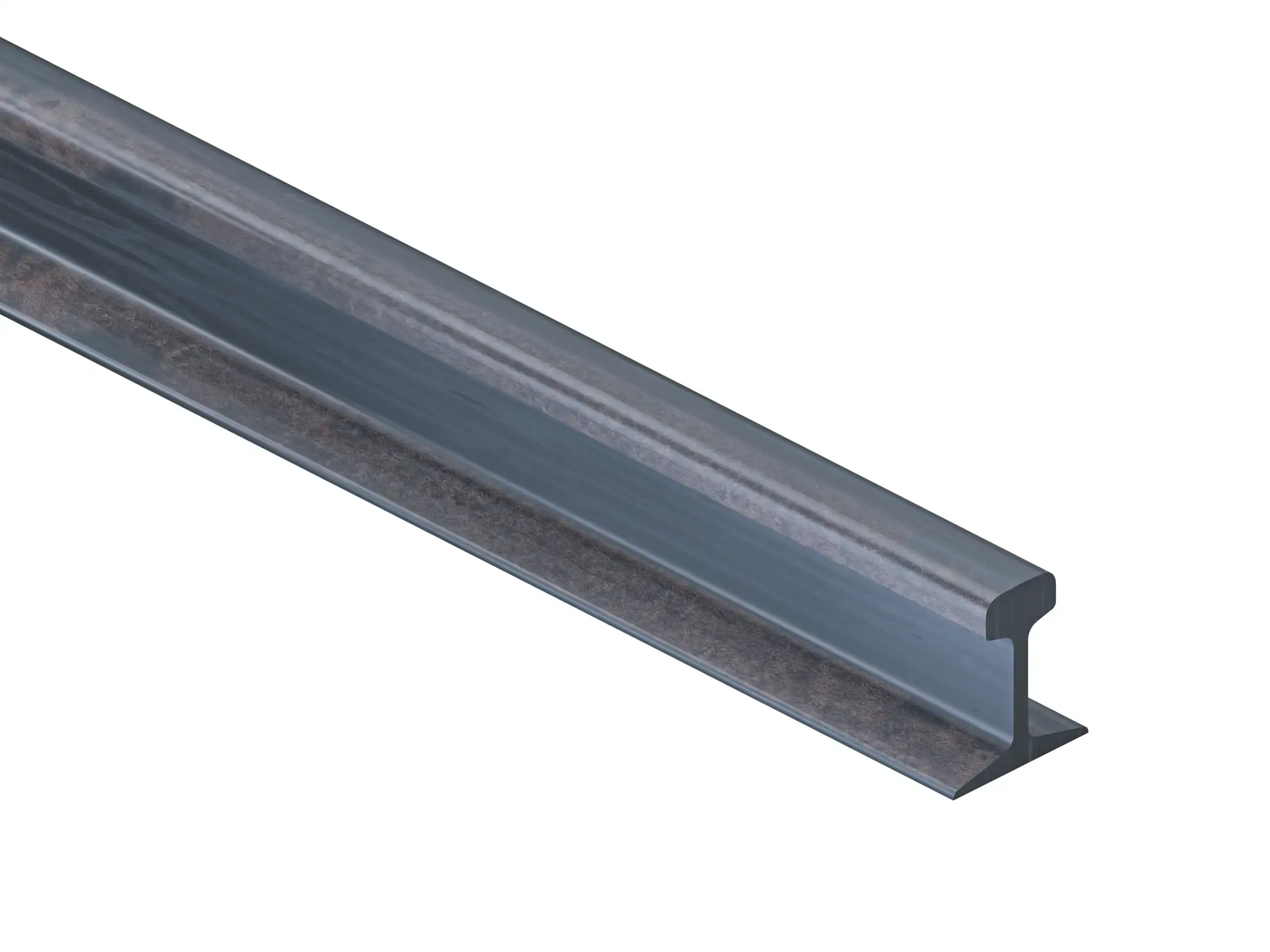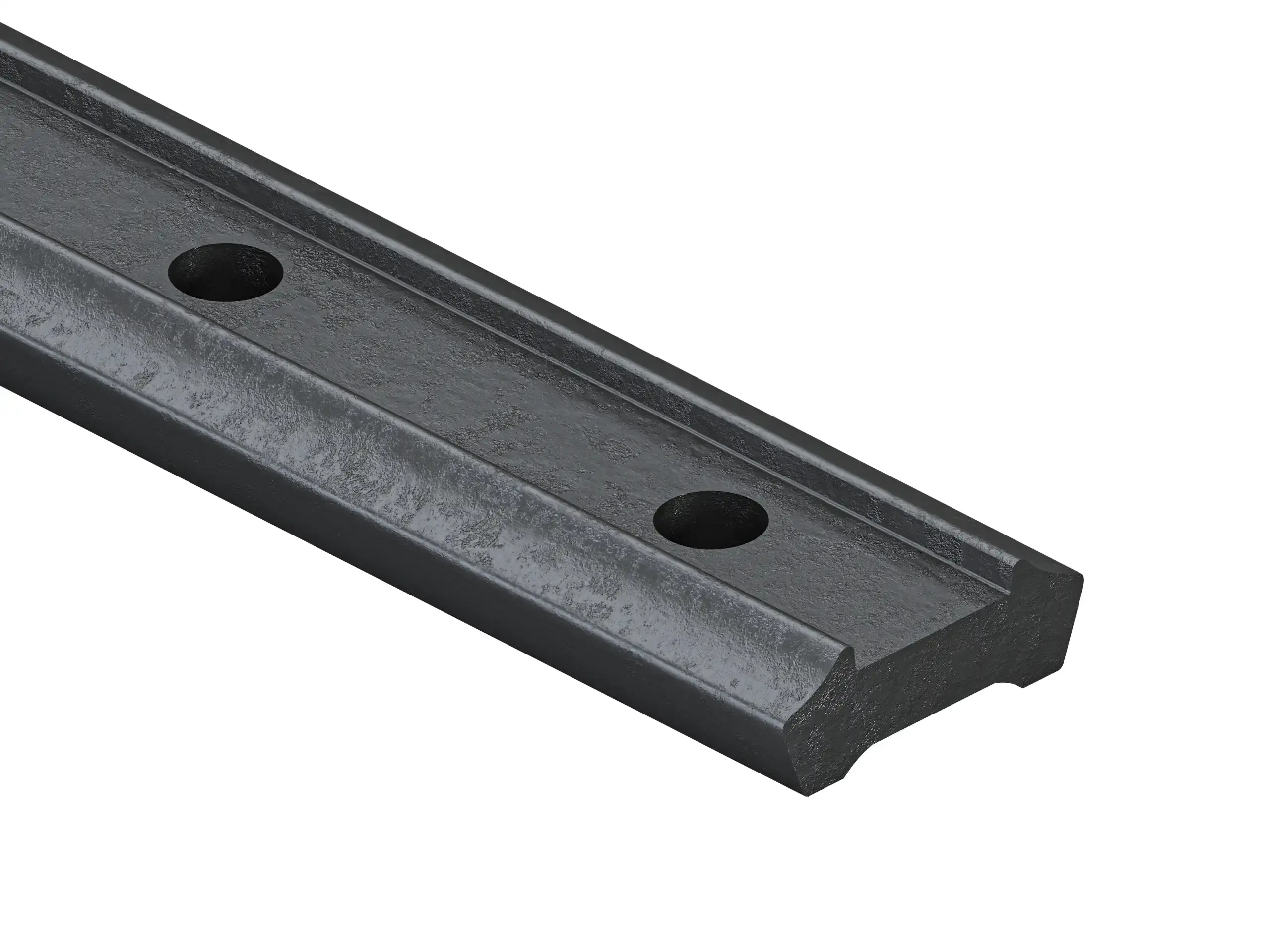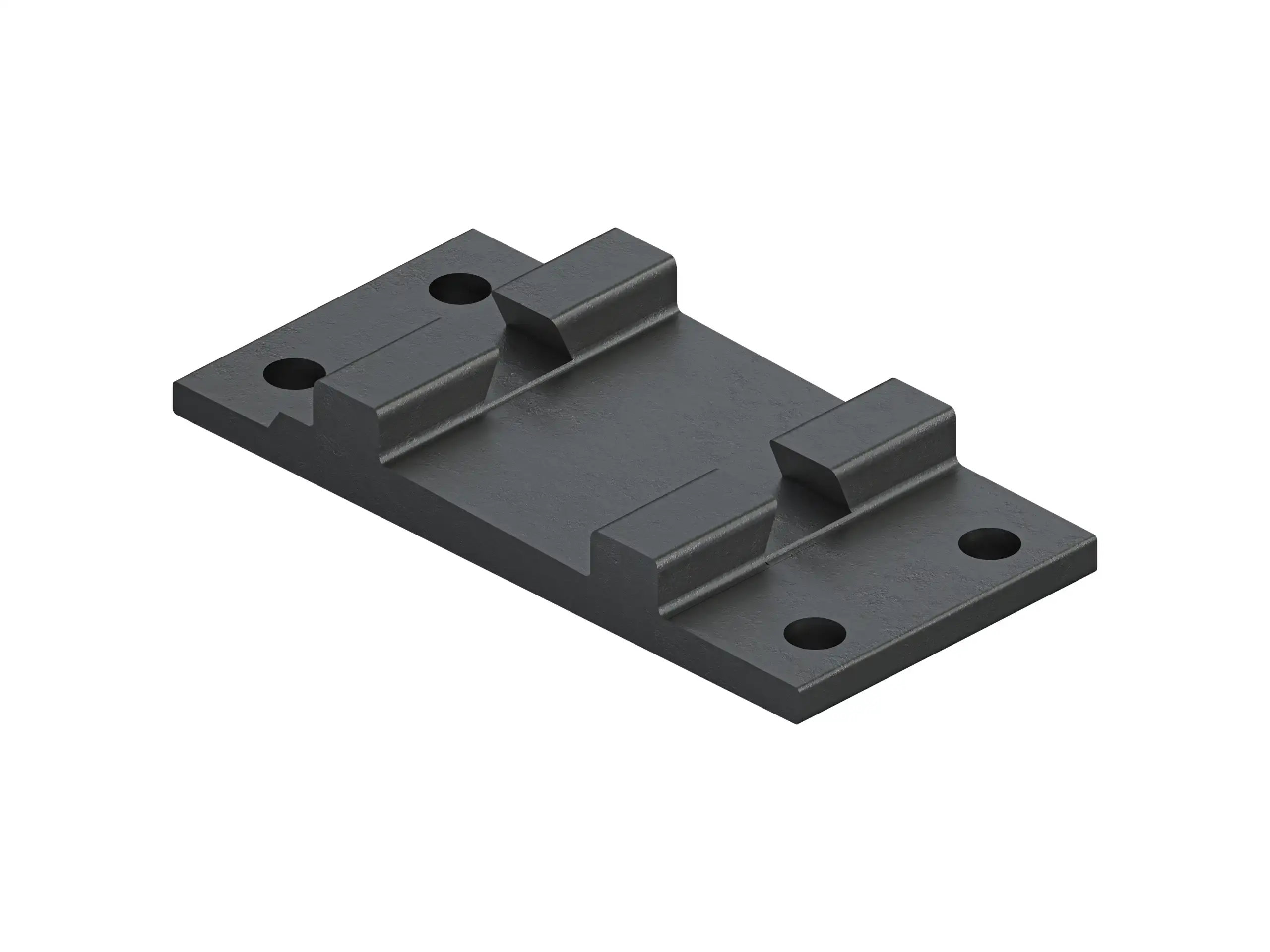Light rails

Order online or enquire through the Rail Sales Department.
This is a rendered image. The real product will look different.
Select parameters
Rail profile Please select an option to see price and add to cart
Steel grade
Type of driling Please select an option to see price and add to cart
Length - L [mm] Please select an option to see price and add to cart
About delivery
- Personal pickup:
- If you pick up the rails with your own transport, please note that the rails are loaded from the top at our warehouse, and railway accessories are loaded with a forklift from the side.
- Oversized transport:
Only takes place during night hours (22:00-06:00).
- Transport by Moris:
Provide equipment and personnel for unloading the delivery.
Available delivery methods and costs will be displayed in the shopping cart during the order process.
Available delivery methods
Depending on the weight and length of the ordered products, we offer many convenient delivery methods.
We deliver orders starting from 1 item throughout Poland!
-
Self pick-up
You can collect the goods the next day after paying for the order.
-
Moris Transport
We will deliver the largest orders with our own transport.
-
Moris HDS
Delivery and crane unloading of products up to 7 m in length.
-
Rail transport
We will deliver rails with our own rolling stock. Pricing on individual request.
-
Parcel courier
Contact Customer Service if you would like to order a courier.
-
Pallet courier
We will soon enable the shipment of cut sections on pallets.
You will see the available delivery methods and costs in the cart while placing your order.
Flexible payment methods
Payment on Moris.eu is fast, convenient, and fully secure. We offer modern online payment methods such as Autopay, Apple Pay, Google Pay, BLIK, and card payments. For companies that prefer more traditional solutions, there is also the option of bank transfer based on a proforma invoice. We operate in accordance with international quality management standards – confirmed by the ISO 9001:2015 certificate.
-
Proforma invoice
Advance payment based on an issued invoice
-
BLIK
Mobile payment using a phone
-
Fast transfers
Support for the most popular banks in Poland
-
Digital wallets
Payment using Google Pay and Apple Pay
-
Credit/debit cards
Online payment by card: Visa, MasterCard, and others
Related Products
Description
We offer a wide range of narrow gauge rails, designed to meet a variety of technical requirements. Our rails are characterized by precision workmanship, and are available in a variety of types and lengths to perfectly match your specific infrastructure needs. With our commitment to providing quality products, you are assured of receiving a product that meets your expectations.
Characteristics of narrow gauge rails
Narrow gauge rails are a specialized type of rail used in the railroad industry, characterized by a narrower track width than standard rails. Manufactured from high-quality steel, narrow gauge rails show exceptional resistance to wear and deformation, which is crucial in harsh operating conditions. Their profile is adapted to lower loads and speeds, which is reflected in the thickness and shape of the rail, providing optimal strength while maintaining flexibility.
The manufacturing process for narrow-gauge rails begins with the selection of the right quality steel, which is then pre-machined to achieve the desired shape of the raw rail. The next step is hot rolling, which ensures a uniform metal structure and precise rail dimensions. They can be heat-treated to increase their hardness and wear resistance.
A distinctive feature of narrow-gauge rails is their lower weight per running meter compared to standard rails, which makes them easier to transport and install. Their geometry is precisely designed to ensure optimal handling of rail vehicles, minimizing the risk of derailment.
Features and advantages of narrow-gauge rails
Features of narrow gauge rails:
- Reduced track width - these rails are designed for tracks with narrower gauge than standard railroad rails.
- Lighter construction - the weight per running meter is lower compared to wide-track rails, making installation easier.
- Optimized profile - adapted to lower loads and speeds, which contributes to their strength and durability.
- Precision machining - rails undergo precision machining processes, including hot rolling and heat treatment.
Advantages of narrow-gauge rails:
- Greater flexibility in route design - these rails make it possible to build tracks in hard-to-reach or space-constrained areas.
- Lower installation costs - lighter construction translates into lower transportation and installation costs.
- Safety in use - precise design and high quality workmanship minimize the risk of derailment and other failures.
- Versatility of applications - these rails are ideal for light rail vehicles, including tourist park railroads, industrial railroads and narrow-gauge railroads.
Narrow-gauge rail profiles
We offer narrow gauge rails with S10 DIN, S14 DIN, S18 and S20 DIN profiles.
S10 DIN
Features:
- S10 DIN is a lightweight rail profile weighing about 10 kg per meter.
- It features smaller lateral dimensions compared to heavier rails.
Advantages:
- Ideal for lightweight applications such as amusement parks and industrial railroads.
- Low weight makes transportation and installation easier.
Disadvantages:
- Limited resistance to higher loads and speeds.
- Unsuitable profile for heavy commercial use.
S14 DIN
Features:
- The S14 DIN profile has a weight of about 14 kg per meter and has a more robust construction than S10.
Advantages:
- Increased strength makes it suitable for medium-duty lines, such as light industrial rail applications.
Disadvantages:
- More weight than S10, which can affect installation difficulties and increased transportation costs.
S18 h
Features:
- Weighing about 18 kg per meter, the S18 profile is designed for more demanding construction than S10 and S14.
Advantages:
- Provides better stability and strength.
- Ideal profile for more intensive use in industrial environments.
Disadvantages:
- Higher weight can lead to higher installation and transportation costs.
S20 DIN
Features:
- S20 DIN is one of the heavier narrow-gauge profiles, weighing about 20 kg per meter.
- It has a more robust construction for increased strength.
Advantages:
- Best suited for heavy industrial applications where greater strength and stability are required.
Disadvantages:
- High weight significantly increases transportation and installation costs.
Selection of the appropriate profile should be dictated by the specific needs of the project and expectations for durability and performance.
Steel grades
We offer narrow gauge rails made of steel 700, R0550, R200.
700 steel
Features:
- High tensile strength steel, typically reaching values on the order of 700 MPa.
- Known for its good wear resistance.
Advantages:
- Provides excellent durability and strength, especially in high-load and heavy-duty environments.
- Ideal for rail production in high-traffic areas.
Disadvantages:
- Higher cost compared to lower strength steels.
- More difficult to machine due to its hardness.
R0550 steel
Features:
- Medium strength steel, often used in standard railroad applications.
- It is characterized by good ductility.
Advantages:
- Easier to machine than higher grades of steel, while maintaining adequate strength.
- A good choice for standard rail applications where extreme strength is not required.
Disadvantages:
- Not suitable for high-load applications or extreme service conditions.
R200 steel
Features:
- A high-strength steel typically used in projects requiring extra resistance to abrasion and pressure.
Advantages:
- Very good strength and hardness, making it ideal for use in harsh environments such as heavy rail traffic or harsh weather conditions.
Disadvantages:
- More difficult to work with due to its hardness.
- Can be more expensive to purchase than lower grade steel.
Applications of narrow gauge rails
S10 DIN rails are most commonly used in light rail structures such as amusement parks, tourist railroads, and industrial plants with lower loads. Due to their lightweight construction, they are ideal for routes with lower load requirements, where ease of installation and flexibility in track adaptation are important.
The S14 DIN profile is mainly used in light industrial applications such as internal transport in plants, small industrial railroads and transport systems in mining areas. Such profiles are suitable for medium loads, providing a good balance between strength and flexibility.
S18 profile rails are designed for more demanding industrial constructions where greater strength is needed. These profiles are often chosen in medium- and large-scale manufacturing plants, mining areas and forestry transport, where loads are heavier.
The heaviest profile in question, S20 DIN, is used in the most demanding industrial environments, such as large industrial plants, heavy mining and forestry transport. Because of their strength, they are ideal for areas where heavy loads and intensive use regularly occur.
In each of these cases, the selection of the appropriate narrow-gauge rail profile should be carefully tailored to the specific needs and conditions of the route. It is important to consider both load and environmental conditions to ensure the safety and efficiency of the rail system.
Tips for investors
- Needs analysis - carefully determine load requirements and operating conditions to select the right rail profile.
- Steel grade analysis - choose a steel grade based on strength and corrosion resistance requirements.
- Supplier - choose reputable suppliers with experience in the rail industry who can provide quality certifications.
- Check standards and norms - make sure rails meet relevant industry and safety standards.
- Schedule logistics - plan transportation and installation so that rails do not run out on site.
- Long-term perspective - think about future operation and maintenance requirements to ensure the longevity of your investment.
Storage of narrow gauge rails
Proper storage of narrow gauge rails is key to maintaining their quality and functionality. Our recommendations:
- Dry and horizontal storage - store rails in a dry place, avoiding direct contact with the ground. Lay them horizontally on stable supports.
- Corrosion protection - for long-term storage, use corrosion protection measures such as suitable coatings or oils.
- Stacking the rails - they should be stacked in an orderly manner, preferably in a single row, to avoid deformation.
- Provide adequate clearance - maintain sufficient clearance between stacks of rails to allow easy access and ventilation.
- Marking and identification - clearly mark each stack of rails, specifying type, size and date of delivery.
- Regular inspections - regularly check the condition of rails for rust and damage, especially if they are stored outdoors.
- Limit sun exposure - if possible, avoid prolonged exposure of rails to direct sunlight.
Did you know.
- Narrow gauge rails have a rich history, having originally been used in the mining industry in the 19th century to transport coal.
- In addition to the mining industry, these rails are used in tourism, amusement parks and agriculture.
- Narrow gauge rails have a unique track geometry that allows them to negotiate tight curves more easily.
- Technological advances have made it possible to manufacture narrow gauge rails from advanced steel alloys, increasing their durability and strength.
- Modern narrow gauge rails are designed to operate in extreme conditions, including high and low temperatures.
- Narrow gauge rails are used all over the world, from remote mountain areas to urban amusement parks.
Narrow gauge rails - why with us?
At Moris steel wholesaler we not only have a wide range of narrow gauge rails with different profiles and grades of steel, but also guarantee professional service and technical advice. Our offer is structured to meet even the most demanding projects, so customers will find with us the ideal solutions to fit their specific needs. In addition, we provide a variety of flexible delivery options for easy and convenient shopping, regardless of the scale of the project or its location.
FAQ
How much does narrow gauge rail weigh?
The weight of a narrow gauge rail depends on its profile, length and the material from which it is made. A typical narrow gauge rail can weigh from a few to several kilograms per running meter. For example, a rail with an S18 profile can weigh about 18 kilograms per meter. However, it is worth noting that these values can vary depending on the manufacturer and the specifications of a particular product. For accurate information on the weight of a particular narrow gauge rail, it is best to consult our consultants.



